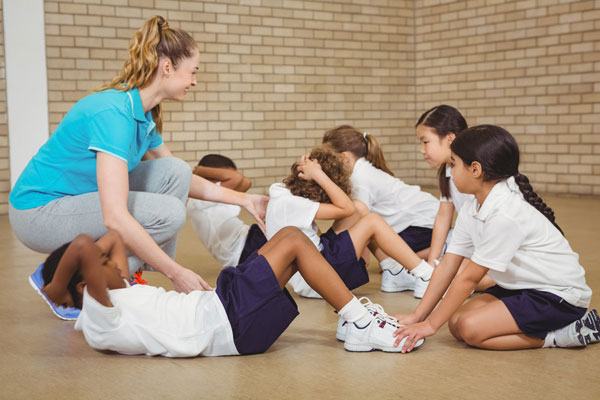- South Texas Students Meet Accordion Music Icons Los Tigres Del Norte In Edinburg Thanks To Khs America/Hohner Alianza Académica Initiative
- Fragile Planet Offers a Nighttime Wildlife Experience
- Falcons Soccer Off & Running
- Cameron County Receives Funds to Improve Two Parks
- Falcons Complete First Half of 32-6A
- School District to Help out Victims of California Wildfires
- Sand Castle Days Continued Despite Unexpected Weather
- Ready for District
- Discussion of Garbage Dumpster Rates, Agreements Between State & City on Highway Regulations, and More
- 31st Annual Shrimp Cook-Off is Right Around the Corner
Is Your Child Getting Enough Physical Activity at School?
- Updated: July 15, 2016
(StatePoint) Only one-fourth of kids and teens are getting enough physical activity, according to a recent study; and physical activity is not just a necessity for a healthy body; it can contribute to a healthy mind.
The “2016 Shape of the Nation” report by Voices for Healthy Kids found that while Physical Education (PE) and other programming in schools could address this gap, few states have policies in place requiring schools to offer effective PE programs to all students. Additionally, competing funding and educational priorities are making effective PE programs less common.
Other studies have found that active students focus and think better. That means higher test scores, better grades and more engaged learning across the board. But the benefits don’t end there. Experts say that PE addresses the needs of the whole child.
“Effective physical education programs positively impact kids’ physical, mental, and emotional health,” says Dr. Stephen Daniels, Department of Pediatrics at the University of Colorado School of Medicine. “Beyond reducing obesity risk, adequate physical activity during the day improves judgment, reduces stress, and can increase self-esteem.”
In an effort to get PE back in the schools, the experts at Voices for Healthy Kids, an initiative of the American Heart Association and the Robert Wood Johnson Foundation, are encouraging parents to take PE seriously with the following tips:
- Ask your school how much time kids spend in physical education class. Is it adequate? Elementary students should get at least 30 minutes a day. You can be a parent advocate in making PE and other opportunities for activity a priority in your school. Get other parents involved, too.
- Talk to your kids about what activities they participate in at PE. Is it a diverse range of activities? Activities should include a wide range of skill-building and moderate to vigorous physical activity.
- Supplement physical activity at school with an active lifestyle. What activities can you do as a family? Play sports with kids on weekends, take walks and bike rides and encourage kids to put down the screens and be active at least 60 minutes each day.
- Learn more about the benefits of PE and consider getting involved by joining the Voices for Healthy Kids PE Action Team and by followingthe conversation on social media at #ProtectPE. More information and resources can be found at voicesforhealthykids.org/PE.
Child health advocates say that at a time when more than a third of children and adolescents are overweight or obese, according to the Centers for Disease Control and Prevention, PE needs to be made a priority in schools nationwide.

